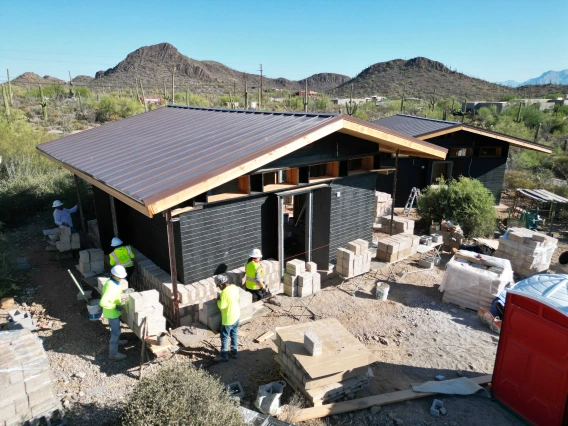CAPLA Professor’s SunLink Research to be Published in Harvard Law & Policy Review

When Tucson’s SunLink streetcar opened in 2014, it hoped to bridge the city’s core, connecting the University of Arizona, Banner–University Medical Center, downtown and the Mercado District.
More than a decade later, a new study reveals that the streetcar has transformed the city’s growth, economy, and equity landscape.
The study, co-led by Arthur C. Nelson, professor emeritus of urban planning and real estate development at CAPLA, and Daniel Lawlor, data analyst with the City of Tucson’s Department of Transportation and Mobility, is the first comprehensive analysis of how the streetcar has shaped Tucson’s development since its launch.
Their research, completed in 2024, will be published this spring in the Harvard Law & Policy Review.
“I have been a national pioneer in assessing the impact of transit on land use patterns, economic development and social equity since the 1980s,” Nelson said. “The shortcoming of research in this field is that it is one-off. That is, once the research is done, it’s not followed up.”
Through a grant from the City of Tucson, Nelson and Lawlor partnered with city transportation officials Ian Sansom and Jenn Toothaker Mabry to create a research template that could track changes over time.
“With the help of Danny Lawlor, we completed the analysis in 2024,” Nelson said. “Our analysis would not have been possible without Danny’s expertise.”
Lawlor, who specializes in GIS (geographic information systems), helped organize and visualize the data geographically.
“My role was to facilitate research directed by Professor Nelson, who had been asked to quantify the economic impact of the streetcar by the City of Tucson’s Department of Transportation and Mobility,” Lawlor said. “I was tasked with gathering and spatially organizing data for the project.”
Once organized, he passed the information to Nelson, who analyzed it and identified trends. Lawlor also produced maps that visually displayed the corridor’s growth and change.
Between 2014 and 2021, the streetcar corridor accounted for about half of the city’s population and housing growth, according to Nelson. It also added roughly a third of a billion dollars in household income annually after inflation, generated hundreds of jobs and a quarter of a billion dollars in new wages and saw more than 40 percent of corridor residents commuting by something other than a car, compared to 20 percent citywide.
Using Pima County assessor records, the team found that real estate investment along the corridor increased by about $2.5 billion. According to city tax records, the corridor boosted the city’s annual fiscal revenues by $13 million, a 30 percent increase since 2014.
“Tucson’s streetcar has lived up to if not exceeded expectations,” Nelson said. “It is one of the best-planned systems in the nation by connecting a major medical center with one of the nation’s largest universities, then connecting major commercial corridors to downtown and the convention center as well as the Mercado redevelopment area across the Santa Cruz river.”
When the pandemic hit in 2020, Tucson waived transit fares in a move Nelson said was wise.
“The year before the pandemic, the streetcar had less than one million riders,” he said. “But in 2023, it had nearly 1.7 million riders, an increase of about 70%.”
Tax revenues along the corridor increased by $2.3 million during that same period.
“Even though it lost $0.8 million in waived streetcar fares, the net fiscal gain was $1.5 million or an increase of 188%,” Nelson said. “We understand that it is partly for this reason that the city decided against reinstating fares.”
Nelson’s forthcoming article with Brian Connolly, a law professor at the University of Michigan, extends these findings into public policy.
“While city officials might want to pledge value-added fiscal revenue from transit for a variety of purposes, including reinvesting it into transit, pledging revenues requires compliance with state laws, which may not be possible or practicable,” he said.
Their analysis explores ways new revenue can still be used to promote equity and reinvestment by allocating it through the city’s general budgeting process.
For Nelson, the ultimate takeaway is clear: investing in transit pays off economically, environmentally and socially.
“By knowing how people, jobs and investment respond to transit, the city will know better where to make the next wave of transit investments,” he said.



